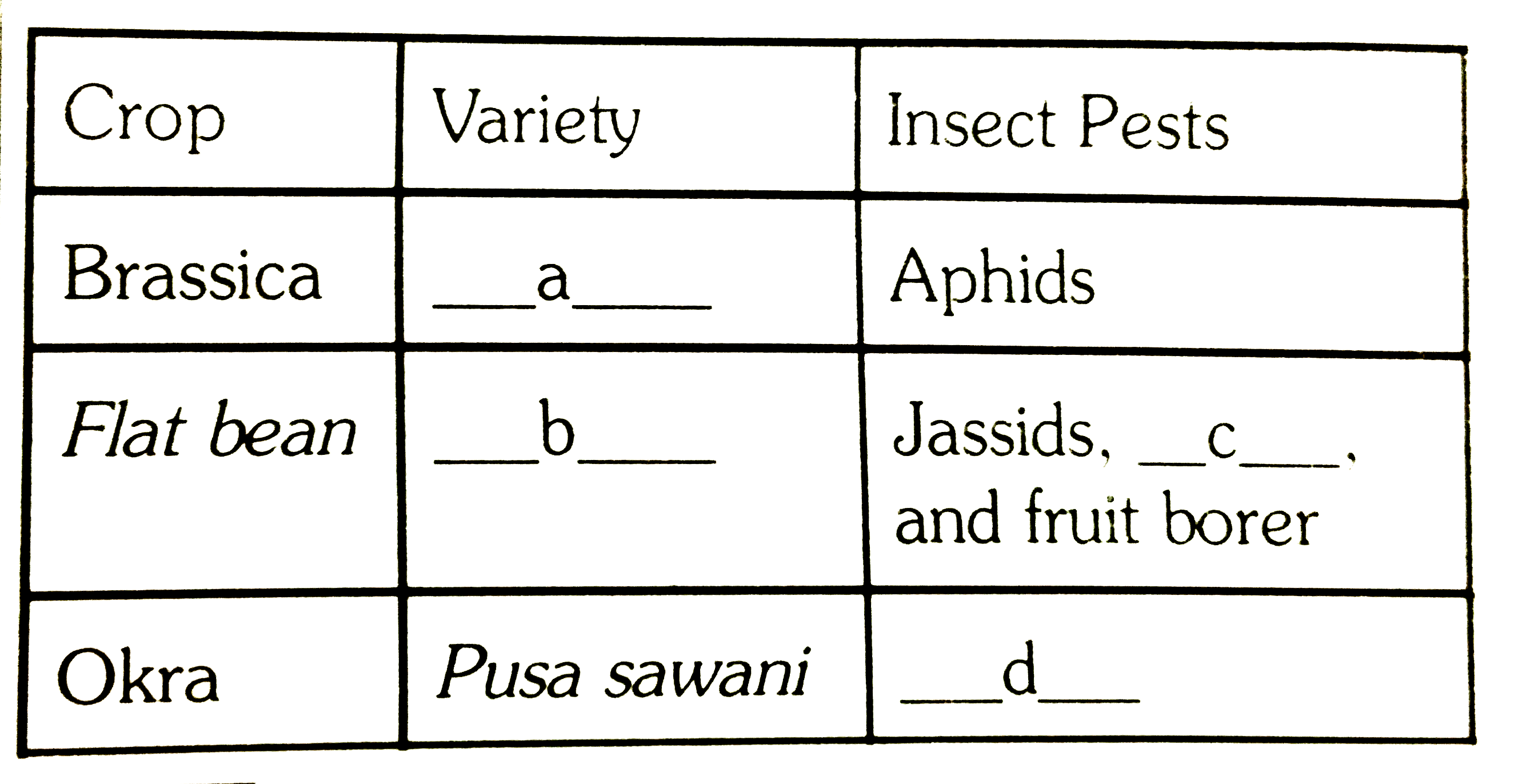Source of resistance genes for developing insect/ pest resistant variety can be. Br a. Cultivated varieties. Br b. Wild relatives. Br c. Germplasm collections of the crop.
a & b only
b & c only
a & c only
a, b & c
To determine the source of resistance genes for developing insect/pest-resistant varieties, we can analyze the three options provided:
1. Cultivated Varieties: These are the varieties that farmers grow. They are often the result of hybridization, which involves crossing different varieties to combine desirable traits. Through this process, resistance genes can be introduced into cultivated varieties, making them more resilient to pests.
2. Wild Relatives: Wild relatives of crops are closely related species that have not been domesticated. They often possess unique traits that can confer resistance to various stresses, including insect pests. By utilizing these wild relatives, breeders can introduce resistance genes into cultivated varieties, enhancing their pest resistance.
3. Germplasm Collections: Germplasm collections consist of a wide variety of genetic material from a species. These collections include both cultivated varieties and wild relatives, providing a rich source of genetic diversity. By studying and utilizing these collections, researchers can identify and isolate resistance genes that can be used to develop pest-resistant crops.
Based on the analysis of these three sources, it is clear that all of them can contribute to the development of insect/pest-resistant varieties. Therefore, the correct answer is that all three options (cultivated varieties, wild relatives, and germplasm collections) are valid sources of resistance genes.
Final Answer: All of the above (a, b, and c) are sources of resistance genes for developing insect/pest-resistant varieties.
---
Similar Questions
Knowledge Check
- Question 1 - Select One
Which of the following shows the correct sequence of steps involved in breeding a new genetic variety of a crop
(I) Selection and testing of superior recombinants (ii) Germplasm collection (iii) Cross hybridisation among the selected parents (iv) Evaluation and selection (v) Testing, releases and commercialisation of new cultivarsAb,d,c,a and eBa,b,d,c and eCc,d,a,b and eDb,c,a,d and e - Question 2 - Select One
Identify the false statements -
I. One of the objectives of plant breeding is to develop disease, insect and pest resistant varieties. -
II. Plant breeding is both art and science.
III. Catla and Rohu are the most eaten marine fishes in our country.
IV. South Indian sugarcane variety Saccharum officinarum has thiner stem and lower sugar content than the North Indian one.AI and IIBIII and IVCAIIDNone - Question 3 - Select One
Some released crop varieties bred by hybridisation and selection, for insect pest resistance are given. Fill up the blanks -
 AA - Flat bean, B - Aphids, C - Okra (Bhindi)BA-Aphids, B - Flat bean, C - CauliflowerCA-Aphids. B - Flat bean, C - Okra (Bhindi)DA-Virus, B - Flat bean, C - Okra (Bhindi)
AA - Flat bean, B - Aphids, C - Okra (Bhindi)BA-Aphids, B - Flat bean, C - CauliflowerCA-Aphids. B - Flat bean, C - Okra (Bhindi)DA-Virus, B - Flat bean, C - Okra (Bhindi)
One of the objectives of plant breeding is to develop disease, insect and pest resistant varieties.
View SolutionGive the names of two insect resistant crop varieties.
View SolutionSome released crop varieties bred by hybridization and selection, for insect pest resistance are given in the table, complete the table
 View Solution
View SolutionWhich one of the following is not the product of transgenic experiments ?
A) Pest-resistant crop variety
B) High nutritional value in grains
C) Production of insulin by rDNA technique
(D) Drought-resistant cropsView SolutionSelect the correct match w.r.t crop variety and resistance to insect pests
View Solution

